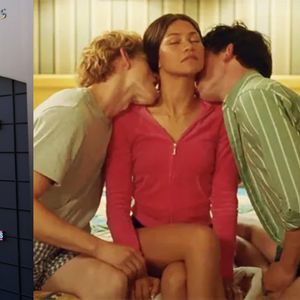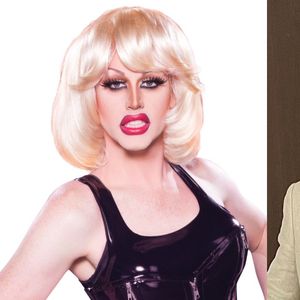Communist Cuba
hasn't exactly been tolerant of homosexuality and
transvestitism. In the late 1960s Cubans were sent to labor
camps simply for being gay, with the state deriding
homosexuality as an illness of the capitalist past.
Even today some Cuban transvestites are detained by
police and threatened with prison for the crime of
peligrosidad, or "dangerousness."
But a new tolerance creeping into the system
over the last decade helped to contribute to what many
believed they would never see on the island: a photo
exhibit by Robert Mapplethorpe, an American photographer
known for his homoerotic images.
Mapplethorpe's spirit comes to life in the
Fototeca de Cuba, a recently restored gallery in the
heart of Old Havana, through an elegant exposition of
48 images spanning the artist's career. The exhibit, titled
"Sacred and Profane," opened to the general public Wednesday
after winning over dozens of Cuban artists and officials,
including parliament speaker Ricardo Alarcon, at an
invitation-only event Tuesday night.
"I never thought I would have this experience in
Cuba, to see Mapplethorpe's work firsthand," said
Ricardo Rodriguez, a 35-year-old photographer. "When
people told me this exhibit was coming, I didn't
believe them." Rodriguez said his surprise stemmed from the
fact that Mapplethorpe was American, gay, and highly
controversial even in his own country.
In 1990 the Contemporary Arts Center in
Cincinnati and its director were charged with
obscenity for exhibiting Mapplethorpe. Both were acquitted.
The case sparked a national debate on U.S. government
funding for the arts, with conservative lawmakers and
religious fundamentalists attacking the National
Endowment for the Arts for subsidizing Mapplethorpe shows.
"It's incredible to see him here," Rodriguez said.
As for the images themselves, most agreed they
were more serene than shocking. "Pure sensuality,"
Farah Gomez, a 26-year-old art historian, said of the
black-and-white images portraying flowers, various
female body parts, and nude black men.
Alarcon, one of Cuba's highest-ranking
officials, agreed. "Frankly, this really doesn't
strike me as a sexual exposition," he told the
Associated Press. "Nudity is found in cultures dating much
further back than the United States or Cuba.
Classicism is full of the nude human body."
Mapplethorpe "achieves the transmission of a purely
artistic message and sense," Alarcon said.
One potent image shows the profiles of an albino
in the forefront and a black man with a shaved head.
The eyes of the albino are open, his gaze drifting off
the photograph; the black man's eyes are closed. Hints of
sadomasochism pepper the exposition as well as images of
love, ranging from two men kissing to a
woman--in this case, actress Susan
Sarandon--holding a young girl. Mapplethorpe's own
self-portraits express some sadness, showing
deterioration in health before his death from
complications of AIDS at age 42 in 1989. Other shots in
the exhibit provoked laughter, primarily one of Arnold
Schwarzenegger in his bodybuilding days.
The exhibit, which doesn't include
Mapplethorpe's roughest images, still embraces the
man's internal contradictions, said Philip Larratt-Smith, a
New York City-based Canadian who curated the show
with the help of Cuba-based Pamela Ruiz. "His work
toys with the polarities of masculine and feminine,
insider and outsider, personal and political,
subjective and objective, black and white...and of course,
sacred and profane," Larratt-Smith said at the Tuesday
night opening.
Several Cuban artists have started tackling some
of Mapplethorpe's themes in the last decade, including
Rene Pena and Eduardo Hernandez Santos. They have
likely faced unique challenges, but Pena is among a dozen
photographers with an exhibit called "Descartes" opening
Friday in a Cuban gallery.
The turning point of the island's newfound
tolerance toward homosexuality, which came with the
limited economic and social liberalization of the mid
1990s, is often linked to the release of the hit film
Strawberry and Chocolate. The movie
explores the friendship between a naive young Communist and
a highly educated Cuban gay man who is in love
with his country but at odds with his government.
Larratt-Smith said he hopes the Mapplethorpe
exhibit, which runs through February 15, will
similarly spark debate on the island. (AP)



















































































